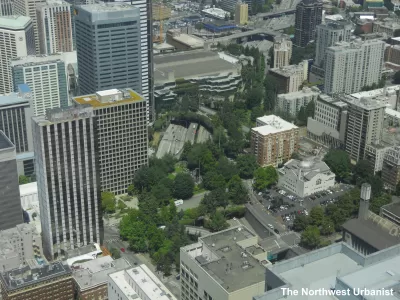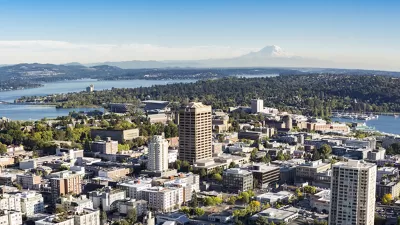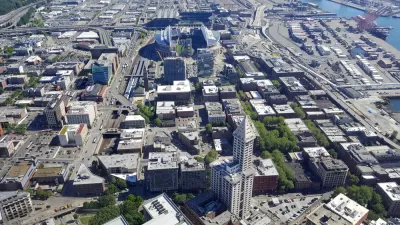Putting a lid on the interstate through downtown Seattle could create new space for parks and housing, reduce pollution, and reconnect the disrupted street grid.

Doug Trumm reports on Seattle's "quiet" release of the Lid I-5 Feasibility Study, which highlights the benefits of capping freeways in cities. The report, funded through a community benefits package from the Washington State Convention Center expansion project, was "designed to understand the technical and financial feasibility of lidding the freeway and to look at opportunities for maximizing public benefits."
Trumm assesses the top takeaways from the study, which analyzed the potential impacts and effects of putting a "lid" on a 17-acre area of Interstate 5. According to the study, the lid could accommodate a 2.5-9.8 acre park, reconnect the street grid, reduce noise pollution, and improve stormwater drainage. The project would also create more space for housing construction in Seattle's dense downtown. "WSP did some structural engineering analysis to determine how much development could go atop the lid, and, while each section is different, the short answer is a lot. Bicknell’s 2019 article on earlier lid feasibility research had hinted midrise and some highrise development was possible. The final report estimated up to 4.7 million square feet of new housing is feasible–enough space for 4,500 homes–and between two and five million square feet of commercial/office space."
Lid I-5 Seattle's Scott Bonjukian told The Urbanist that "getting some more money for studies and planning in the next state transportation package is the next major goal."
FULL STORY: 8 Takeaways from Seattle’s Lid I-5 Feasibility Study

Planetizen Federal Action Tracker
A weekly monitor of how Trump’s orders and actions are impacting planners and planning in America.

Maui's Vacation Rental Debate Turns Ugly
Verbal attacks, misinformation campaigns and fistfights plague a high-stakes debate to convert thousands of vacation rentals into long-term housing.

Cuomo Is the Candidate of Both NIMBYs and Developers. What Gives?
In the New York City mayoral race, odd bedfellows align to preserve the housing status quo.

The Subversive Car-Free Guide to Trump's Great American Road Trip
Car-free ways to access Chicagoland’s best tourist attractions.

San Antonio and Austin are Fusing Into one Massive Megaregion
The region spanning the two central Texas cities is growing fast, posing challenges for local infrastructure and water supplies.

Charlottesville Temporarily Has No Zoning Code
A judge ordered the Virginia city to throw out its newly revised zoning code, leaving permitting for new development in legal limbo.
Urban Design for Planners 1: Software Tools
This six-course series explores essential urban design concepts using open source software and equips planners with the tools they need to participate fully in the urban design process.
Planning for Universal Design
Learn the tools for implementing Universal Design in planning regulations.
Heyer Gruel & Associates PA
JM Goldson LLC
Custer County Colorado
City of Camden Redevelopment Agency
City of Astoria
Transportation Research & Education Center (TREC) at Portland State University
Jefferson Parish Government
Camden Redevelopment Agency
City of Claremont





























